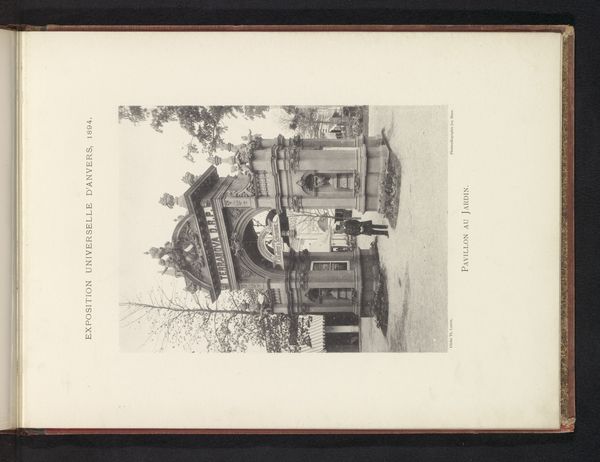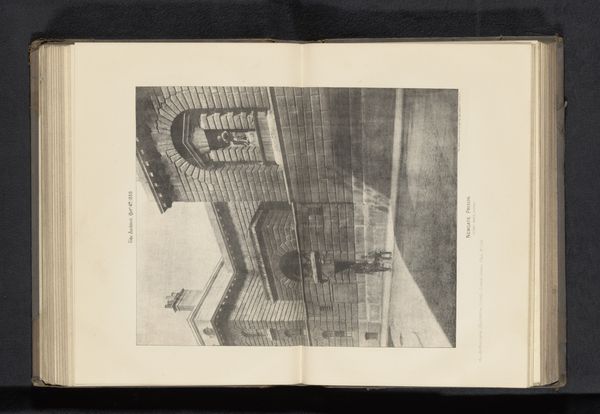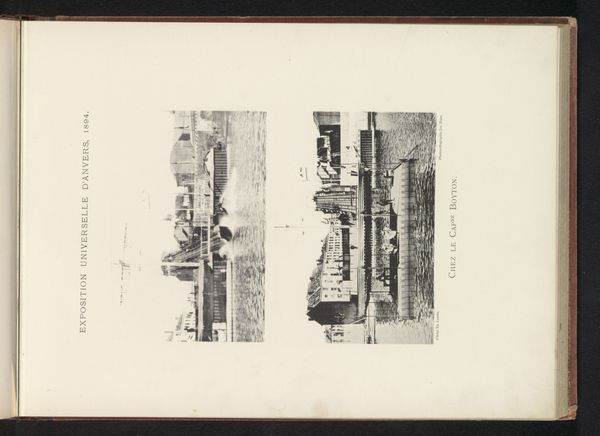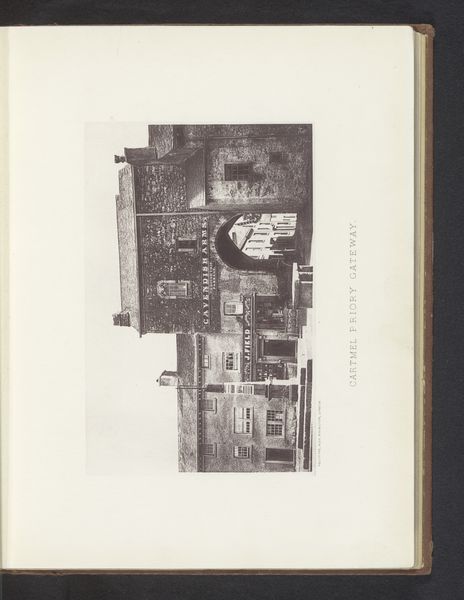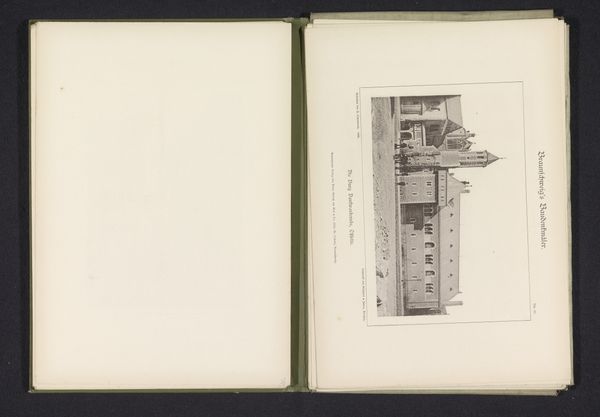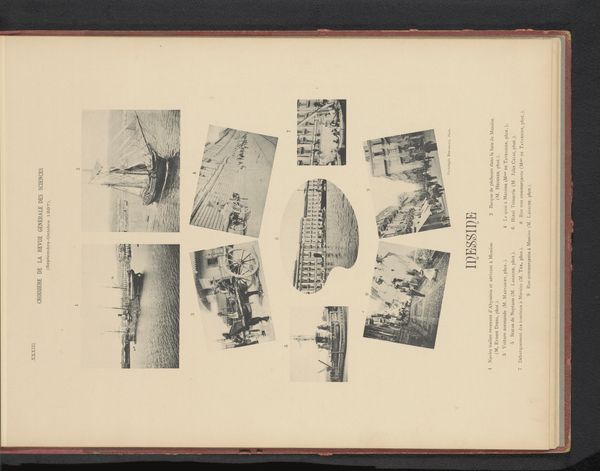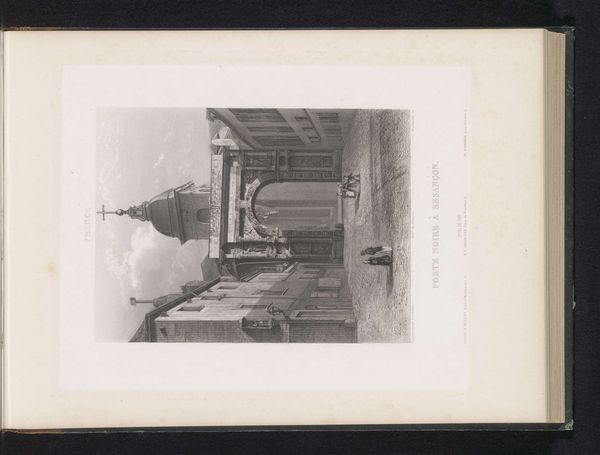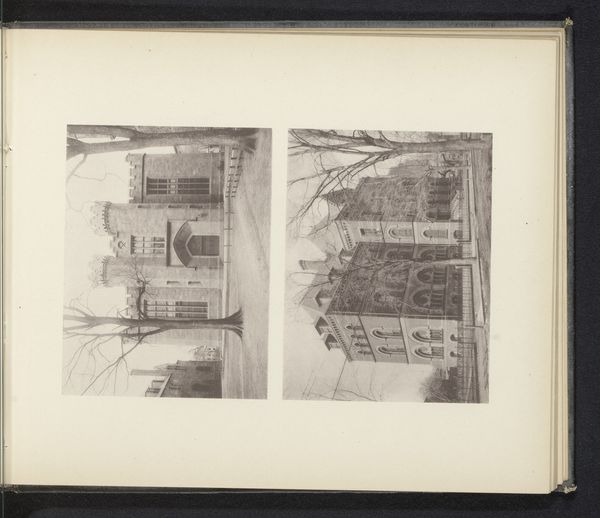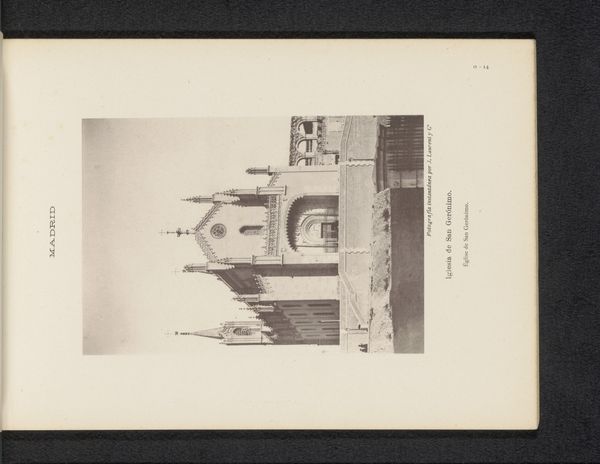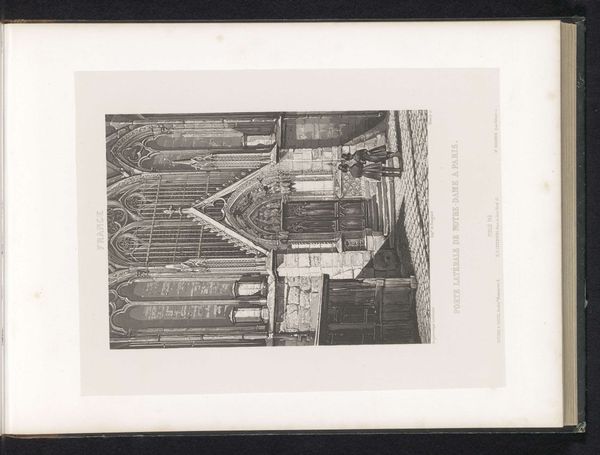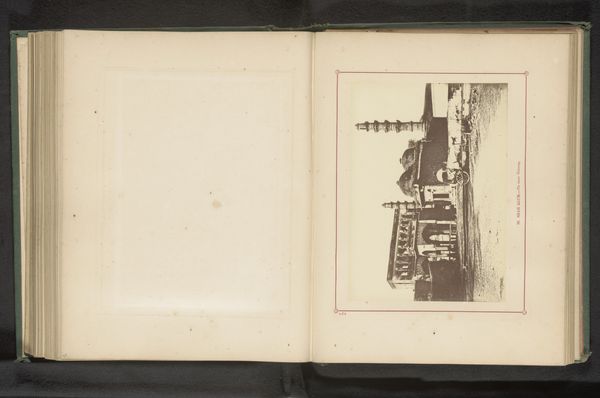
print, photomontage, photography, site-specific, albumen-print
# print
#
photomontage
#
photography
#
coloured pencil
#
site-specific
#
cityscape
#
albumen-print
#
realism
#
building
Dimensions: height 218 mm, width 161 mm
Copyright: Rijks Museum: Open Domain
Curator: I find the stark linearity in this image quite compelling; it is all about angles and lines. Editor: Indeed. We're looking at "Exterior of the Saint-Nicolas Chapel in Antwerp," a photomontage crafted around 1894 by Th. Lantin. My immediate sense is that it exudes a serene yet slightly melancholic atmosphere. Curator: Melancholic, you say? I see a calculated composition, a play between light and shadow, and the formal elements create an almost geometric study of the chapel's facade. The high contrast accentuates every structural detail. Editor: But those details themselves are suggestive. Saint-Nicolas chapels, historically, were often situated in bustling commercial districts. Seeing this chapel depicted during a period of massive urban change in Antwerp stirs thoughts about shifting power structures and perhaps anxieties concerning tradition amidst modernity. Curator: While that may well be, let's not overlook the skillful manipulation of the albumen print, though. Observe the crispness, the tonal range. The texture itself becomes an integral part of its representational value. Lantin wasn't just capturing an image; he was creating a visual argument through the print itself. Editor: Fair point. The meticulousness certainly underscores a degree of reverence, which would fall in line with late nineteenth-century sensibilities towards historical preservation—particularly of religious sites impacted by broader social forces. This photomontage participated, after all, in a universal exposition d’Anvers, so we are not seeing an objective representation here. Curator: Consider too the impact of the angled perspective; it draws the viewer into the edifice while concurrently revealing its spatial context. There’s something quietly disruptive, visually arresting about how he eschews typical architectural rendering techniques. Editor: Disruption implies intent, doesn't it? Could Lantin be seen to comment, however subtly, through his non-traditional visual methods upon an increasingly secularized society’s relationship to its sacred landmarks? The rise of photography coincided with questioning these fundamental shifts within cultural heritage, too, which gave license to artists and institutions to reconsider how these places were presented and perceived. Curator: Hmm, food for thought, indeed. Though perhaps we can also see a visual encoding beyond immediate surface interpretation? The technical accomplishment as meaningful commentary unto itself. Editor: Or an indication of exactly where, and for whom, such “accomplishment” had its principal worth. Curator: A fascinating debate. Editor: Precisely why art history—and formalism, for that matter—remain such captivating fields.
Comments
No comments
Be the first to comment and join the conversation on the ultimate creative platform.
